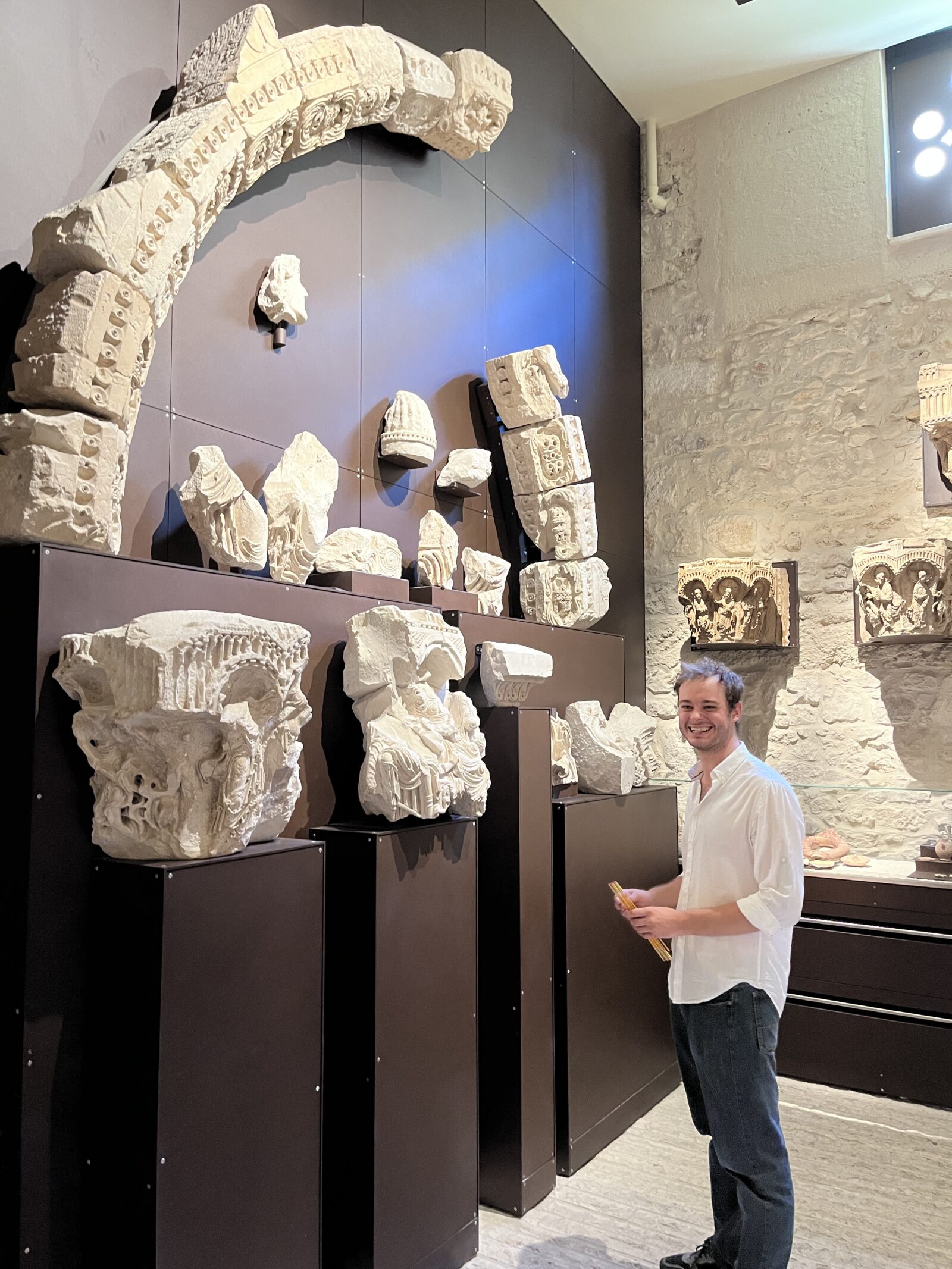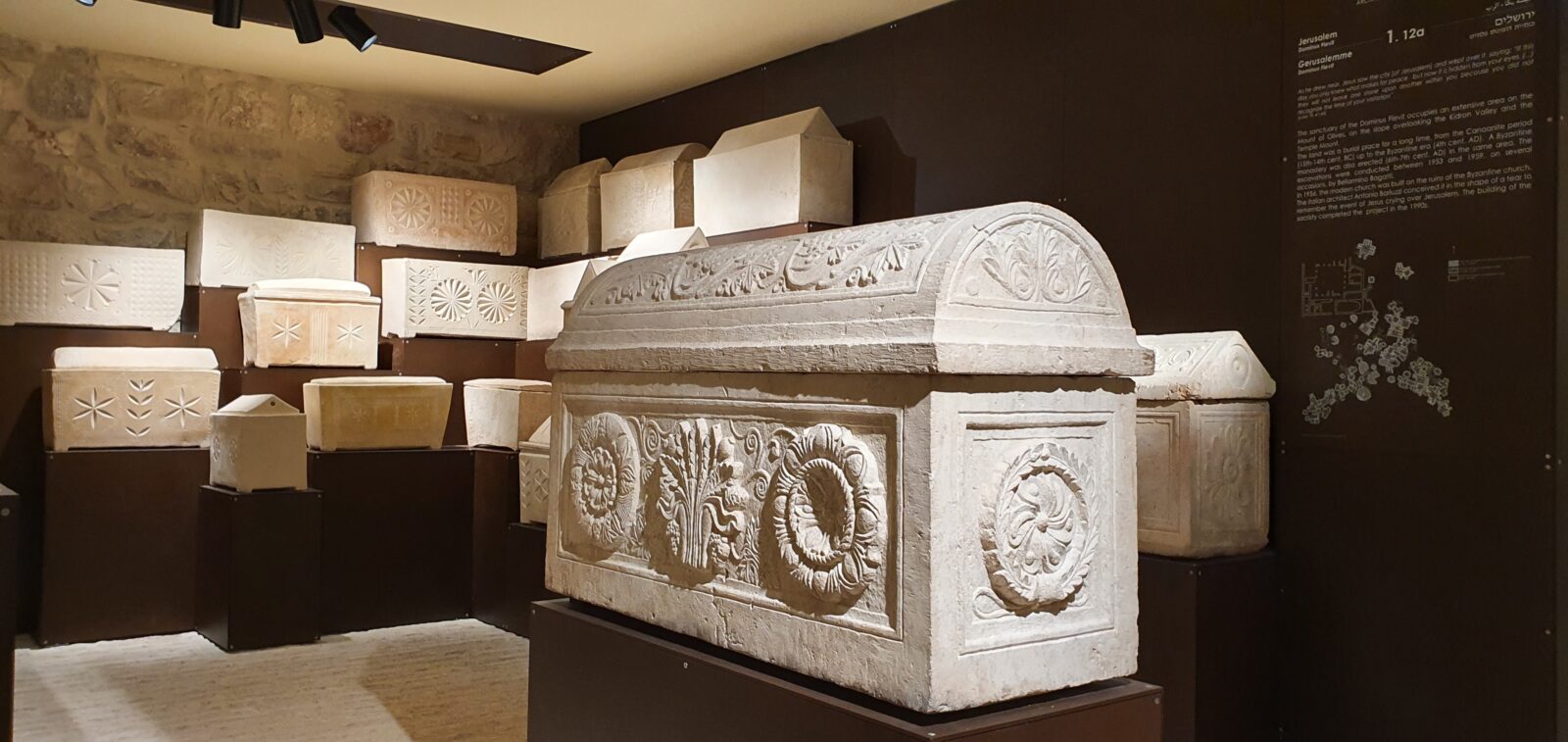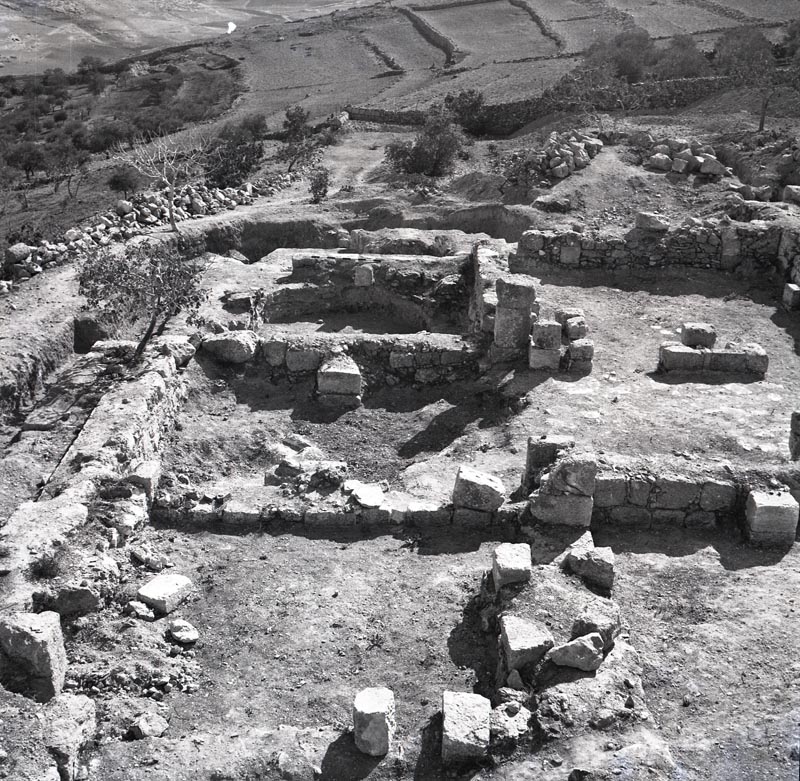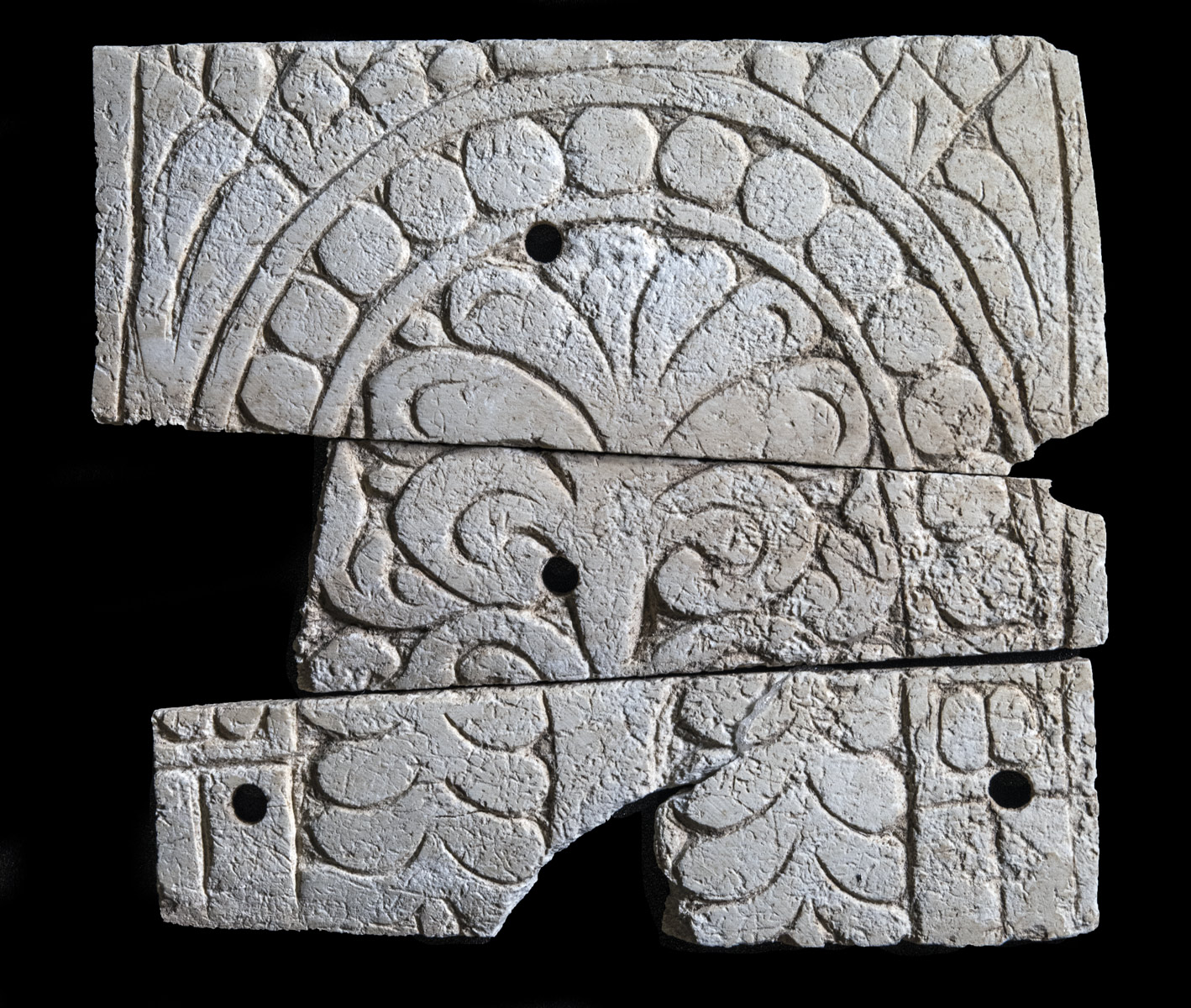My experience at the service of the archaeological museum of the SBF
As a recent graduate in Economics and Management of Cultural Heritage from the Catholic University of the Sacred Heart in Milan, I was looking for an opportunity that would allow me to concretize the skills I had matured in an academic context. The possibility of a period of service at the Terra Sancta Museum was for me an occasion not to be missed, both because it would have allowed me to interface with a situation related to my studies and because it would have given me the chance to live in Jerusalem, a city which benefits from a fascinating historical and cultural context.

A proposal to me
These were the premises and I was very anxious to start a new experience, even although, I have to admit, I did not know about this museum and I knew very little about the archaeological activity of the Franciscan Friars in the Holy Land. For this I have to thank proTerraSancta, and in particular Tommaso Saltini, Director of proTerraSancta for having introduced me to this situation. “My ignorance” about it turned out to be positive in my first approach to the Museum, when I discovered to my amazement the existence of a very large and noteworthy artistic and archaeological collection. In the second place, I was stimulated and made to feel important both by the activities that were proposed for me to carry out in loco and for the chance to be able to make my contribution for a work undergoing restoration.
This period spent at the Archaeological Museum of the Studium Biblicum Franciscanum, part of the Terra Sancta Museum, turned out to be educational due to the variety of tasks that I was given. To start to understand the dynamics of the Museum, the activities that are done in it and the type of public that visits it, in the first weeks of my stay I was at the reception and ticket office. I began to see how putting myself on the line in these situations also had an influence on my personal growth, for example in how I related to people and their needs, in listening to them and understanding them in their ow languages, learning from the Franciscan patience.

Hall with ossuaries of Dominus Flevit © TSM.
First steps cataloging
After that, I started to collaborate with Daniela Massara, curator of the archaeological collections and Executive Director of the Museum –who guided me throughout my experience here – on tasks closer to my studies and my passions. I worked on cataloguing archaeological finds, searching for or verifying their bibliographical sources, as well as their archaeological contexts of origin, when known. Lastly, I was also involved in activities of a managerial and analytical-statistical type and, as it is a museum which in part is still being set up, some days were spent doing “heavy labour,” taking objects from the stores, transporting them and then the confirmation of their notes in the database.
A part of my cataloguing work focused on the room dedicated to the Sanctuary of Dominus Flevit, where the finds from the excavations carried out there on several occasions by Father Bellarmino Bagatti are on display. The investigations of this area of the Mount of Olives have highlighted three main phases: the Jebusite tombs (linked to the first inhabitants of Jerusalem), the Roman necropolis and the Byzantine monastery, of which some materials were carefully selected to tell their story. This is one of the rooms, in my opinion, with the greatest visual impact, and two rooms are actually devoted to it. In one, we are in front of a “cascade” of ossuaries from the period of Herod (1st century BC – 1st century AD) which capture attention by their shapes, decorations, inscriptions and colours. In the other room, there is a display of objects found inside various tombs, for example pottery from the Bronze Age, jewellery, glass, metals from the Roman period, and some fragments of mosaics and other decorations found in the Byzantine monastery. For this room, the fact sheets on the objects exhibited have to be checked and updated and to do this, it was essential to go through books, in this case written by the Franciscan friar archaeologists with a fine toothcomb. In my past experience I had never done this bibliographic examination before and I found it useful and interesting, also for my personal and cultural growth.

Shepherds’ field during the excavation of Father Virgilio Corbo © TSM.
Discovering the Holy Land Archaeology
During these 4 months I also had the chance to take part in excursions to the places where the Franciscans did excavations and recovered most of the finds, now part of the Museum’s collections. In particular, the places I visited were Peter’s House in Capernaum, the palace-fortress of the Herodion and the Shepherds’ Field in Bethlehem. Regarding this last site, I had the pleasure of having as my guide Father Eugenio Alliata, a great archaeologist and General Director of the Museum. Shepherds’ Field is a monastic complex (Khirbet Siyar el-Ghanam) which stands east of Bethlehem, on a hill in the plain known by the name of “Booz’s Fields”; the ruins are now enclosed by a wall which circumscribes the Franciscan property. The first building was built in around the 4th century AD in an area that had already been occupied in Roman times; later, it was expanded between the 6th and 7th centuries. As Father Virgilio Corbo acutely observes “After the eighth century, the monastery fell into very great abandon and life came to an absolute end there until the present, when with the rebuilding of the new Sanctuary, Christian worship returns to sing the praises of the Almighty.” What we can see today is the result of the excavations by the Franciscan friars, and in particular of the activity of Father Corbo who in the 1950s thoroughly scoured the ruins of the Byzantine monastery in the area around Bethlehem.
The Museum has, in the room dedicated to monasticism, engraved bones which stand out for their originality and which came from a grotto found during the excavations at the Shepherds’ Field. They are rectangular plates of carved camel bone, probably once used to cover a wooden box (perhaps a reliquary). Flowers and leaves are engraved on it, which seem to be inspired in the design by the textile tradition. Although it is a modest craft product, its uniqueness struck me.

Bones worked from the Campo dei Pastori monastery © TSM.
Achievements and expectations for the future
I greatly appreciated, in this experience, the combination of practical and theoretical aspects, from the ticket office to reading books about the archaeological excavations, where I found myself using techniques and different methods of approach but integrated with one another. It was important for me to do tasks in which I was effectively able to use the knowledge matured during my studies and measure myself up to real needs linked to the world of museums but, on the other hand, the fact of having had the chance to be able to study, learn and do research into things that I had worked on made everything more interesting and useful.
From a strictly personal point of view, in these months I have been able to come into contact with a world very close to my passions and my background. The fact of being “immersed” no longer just as a simple passive visitor but as part of the process of organization and management was for me a reason of pride but above all further confirmation of the fact that this is the path that I want to take in the next few years of my life. Now, three months later, it is time for me to return to Italy. I will not conceal that fact that I am very sorry to leave all this. However, I do not rule out returning to Jerusalem and to the Terra Sancta Museum, where I felt welcome from the very first day, where I learned so much and hope to have been useful in what I did, in the future. I would like to thank once again Daniela, Father Eugenio and everyone who accompanied me in this experience.
(Translated from French by Joan Rundo)



